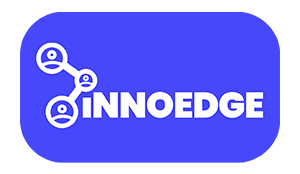Introduction
In the digital age, marketing strategies heavily rely on online platforms and data. The reliance exposes digital marketing to various cybersecurity threats. For businesses, safeguarding digital assets is crucial to avoid financial losses and reputational damage. The following article delves into common vulnerabilities in digital marketing and best practices to secure these platforms.
Common Cybersecurity Threats in Digital Marketing
1. Phishing Attacks
Phishing remains a prevalent threat, with cybercriminals using fake emails and websites to steal sensitive information. Such attacks are responsible for a significant portion of data breaches in digital marketing (ITSecurityWire).
2. Malware and Ransomware
Malware can infiltrate marketing systems, disrupt operations, and steal data. Ransomware can lock marketing assets until a ransom is paid, causing significant operational and financial damage (ITSecurityWire) (Splunk).
3. Data Breaches
Unauthorized access to customer data can occur through various means, including exploiting vulnerabilities in marketing platforms. Data breaches can lead to loss of customer trust and legal repercussions (ITSecurityWire) (Eviden).
4. Social Engineering Attacks
Cybercriminals use social engineering to manipulate individuals into divulging confidential information. These attacks can severely compromise marketing operations and data integrity (ITSecurityWire) (Splunk).
5. Brute Force Attacks
Repeated attempts to guess passwords can lead to unauthorized access to marketing accounts. Weak passwords are particularly vulnerable to such attacks (ITSecurityWire).
6. Unsecure Third-Party Services
Many digital marketing strategies rely on third-party tools and services, which can introduce vulnerabilities if not properly secured. Ensuring the security of these tools is critical to protecting marketing platforms (ITSecurityWire) (AdGuard).
Best Practices for Securing Marketing Platforms
Regular Updates and Patches
Keeping software, plugins, and platforms updated is essential to patch known vulnerabilities. Delayed updates can leave systems exposed to attacks (AdGuard).
Strong Passwords and Two-Factor Authentication (2FA)
Implementing strong, unique passwords and enabling 2FA adds an extra layer of security, making it harder for attackers to gain unauthorized access (ITSecurityWire).
Continuous Monitoring and Incident Response
Utilizing security and event management tools to monitor for suspicious activities allows for quick identification and response to potential threats. Having an incident response plan in place ensures that the organization can react swiftly and effectively (AdGuard) (Splunk).
Secure Third-Party Integrations
Before integrating third-party tools, assess their security practices and ensure they meet industry standards. Regular audits of these services can prevent security lapses (ITSecurityWire) (Eviden).
Employee Training
Educating employees on recognizing phishing attempts, social engineering tactics, and other cyber threats is crucial. Regular training sessions can keep staff aware of the latest threats and how to avoid them (ITSecurityWire) (GlobalSign).
Data Encryption and Backup
Encrypting sensitive data protects it from unauthorized access. Regular backups ensure that data can be restored in case of a breach or ransomware attack (Eviden) (GlobalSign).
Conclusion
In the ever-evolving digital landscape, cybersecurity is a critical component of digital marketing. By understanding common cybersecurity threats and implementing robust security practices, businesses can protect their digital assets, maintain customer trust, and ensure the continuity of their marketing efforts.
Key Takeaways
- Phishing and Malware: Regularly train employees to recognize and avoid phishing and malware threats.
- Regular Updates: Keep all systems and software up to date to patch vulnerabilities.
- Strong Passwords and 2FA: Implement strong passwords and enable two-factor authentication.
- Continuous Monitoring: Use security tools to monitor for and respond to suspicious activities.
- Secure Third-Party Services: Assess and audit third-party tools for security compliance.T



